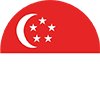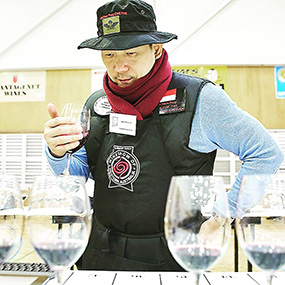“Give a man a fish, and you feed him for a day. Teach a man to fish, and you feed him for a lifetime.” Why do many learned consumers prefer to be led by others when shopping for wines, when they can have the independence of mind to buy any wines that delight their palate? Lim Hwee Peng CWE, FWS ventured to share the ‘Why’ and ‘How’, so that YOU can be a smart wine lover.
If you are reading this article, you must be a wine enthusiast, or started to be interested in vino.
Naturally, it also means you have many positive encounters, be it with the products, people, wine and dining, etc.
Through those experiences, it has dawned upon you that WINE CAN BE COMPLICATED.
On that note, I must acknowledge that in the market, there exist practices that inevitably propagate wine’s complexity.
Perhaps, people living in the wine world has become so comfortable in their dwelling, they have gradually lost touch with people living in the real world.
Well, the good news is, wine can also be understood simply. Let’s start off with some practical aspects of wine enjoyment.
For example, how would I know a bottle is fairly priced vis-à-vis wine quality, and what wines to pick for various occasions?
Due to the volume of information to be considered in making wine purchases, which can be tedious and no fun (even for some professionals), many enthusiasts seek out endorsement of their wine choices via wine apps or wine authorities, while some simply followed a set of numbers (wine rating).
Those options are valid in certain circumstances. But it is not a silver bullet in building up your wine buying confidence, or boosting the rate of wine pleasure.
Why? Simply because ‘taste’ is subjective, and one man’s meat can be another’s poison.
Rather than being led by the nose while spending a considerable budget on wine, perhaps, it might be a better investment to get acquainted with the intricacies of wine, so that the upside will take care of itself.
Assessing Wine Qualities
From 2005 to the present days, I have had the pleasure and pressure of procuring wines for international wine programs under our care, and hosting ad-hoc corporate wine courses/events/activities.
More importantly, as a wine lover, I also buy bottles of vino for personal enjoyment.
Additionally, being a Wine Judge certified by the Australian Wine Research Institute (AWRI), I have the privilege to be actively involved in many wine shows (since 2009) in various Australian wine regions; judging at Decanter Asia Wine Awards, as well as wine competitions in South Africa, South America and Italy.
Hence, my sharing on assessing wine qualities is based on both technical as well as practical considerations.
For evaluating qualities of wines, we can divide the vast range of wines into, primarily, ‘FA’ group, comprising of dry or sweet white, dry or sweet sparkling (red or white), dry or sweet rose wines.
‘TAF’ group is the other category comprising the dry red wines.
The core taste of the groups are ‘fruit’ and ‘acid’ for the FA group, and ‘tannin*, acid, fruit’ for the TAF group (thus, their initials).
(*Tannin is technically a sensation, not a taste, perhaps, a topic for another time.)
Those core tastes are influenced primarily by the climate and environment factors within and surrounding the vineyard; such as terrain, aspects, soil, precipitation, wind, etc.
So what are the impact those factors have on grapes and resulting wine qualities?
In brief, wines made from a cool climate, in either FA or TAF groups, will exhibit tongue-tingling fruit-sourness (acidity) than the pleasurable ripened fruit taste; conversely, a wine originates from a warm climate, fruit ripeness will dominate.
Secondary taste spectrum, such as oak, texture, including some aroma, are influenced by winemaking processes, which we will probably explore in future sharing.
With the simple understanding of cool and warm climate impact on wine taste, we can apply them as such.
When you are eyeing a bottle to be enjoyed over a meal, you will have a higher success rate if you seek out wines from a cool climate, or grape varietals that thrive in such climatic conditions (e.g. Sauvignon Blanc, Riesling, Aligote, etc)
While, dry red wine fans can seek out reds with acid/freshness/minerality as its dominant taste profile for dining, or a pot-luck outing.
Whereas in an occasion that prizes companionship, then a charming and fruit-driven Viognier, Pinot Gris, Gewurztraminer, etc, will keep everyone warm and fuzzy.
Red fans can also consider a vin rouge of a warm-climate origin, offering fruit-intense Cabernet Sauvignon, Merlot, Shiraz, Zinfandel (or its sibling – Primitivo), etc, to enhance the camaraderie of the occasion.
Therefore, other than enjoying wines from a subjective approach (I like what I like), or abstractly (I like wines that offer me a sense of its origin), we can now procure and enjoy wines using factual information governing grape farming.
Scooping a Pleasing Wine
The world we live in can, sometimes, offer a dizzying array of life choices, including wines.
For example, the plethora of wines showcased in any retail wine store, or the lengthy selections in a restaurant wine listing, can potentially inflict mental stress on shoppers and diners.
Obviously, if only wines can be sampled prior to purchasing, then no one needs to experience a pig in a poke.
Nevertheless, there is a simpler and direct method I have been utilizing and sharing with friends and family, consistently purchasing wines of good quality, and at a price of their preference.
Although such a ‘method’ is applicable within a limited width, such as, it is generally applicable to wines beyond the European wine regions.
Consider this equation: Screwcap Enclosure + Wines of a Recent Vintage = Pleasurable Wine.
Let’s elaborate.
Baring the exception, the majority of wines in the market are meant to enjoy young.
Perhaps, up to 5% of the bottles can stay the distance to emerge a much better wine in a decade and beyond (assuming the original state of the wine, and subsequent storage conditions are optimal).
During its youth, most wines have the exuberance in exhibiting their best through energetic expression of primary charm, thus, increasing the rate of pleasure.
Wines that are meant to enjoy young can become tired and uninteresting when the unrealistic expectation is heaped on them to be delightful and engaging beyond their inbuilt stamina.
So buy younger wines, enjoy them as they should be, with less surprises.
Why a specific wine enclosure is part of a pleasing wine’s equation?
Screwcap enclosure can retain wines’ youthfulness and freshness, and as a bonus, may avoid a particular wine fault**: 2-4-6-trichloroanisole (TCA).
(** wines with screwcap enclosure do have their challenges, such as reduction; but with sufficient aeration, the cloud of funky aroma can be removed, allowing the true expression of the wine to emerge.)
In real-world lingo, TCA refers to a bottle of wine that is cork tainted, or one that is contaminated by musty aroma compounds.
Heavy cork taint can give an unpleasant aroma of wet cardboard, old wooden drawer. While in lesser amounts, it can blunt flavours and aromas, thus, making wine seem dull, muted and mouldy smell.
Therefore, when you next find yourself standing in a well-stocked retail wine store, and uncertain of a good pick, apply the equation.
Finally, what about the price issue, is there a ‘best price’ for a bottle of good wine?
A rather complex topic to embark on and elaborate clearly, since one man’s budget can be another’s fortune.
As such, I shall defer to one of the thoughts of Warren Buffet, a legendary investment guru: ‘Price is what you pay, Value is what you get’.
Be it buying wines in a work or personal capacity, another wisdom from the Oracle of Omaha serves me well - “It is far better to buy a wonderful company at a fair price, than a fair company at a wonderful price.”
Just replace ‘company’ with ‘wine’, you get the picture.
Wishing you a wonderful wine learning journey.
Want to be Wine-Smart in your wine journey?
Reach out to Lim Hwee Peng CWE FWS, one of Singapore and South East Asia’s pioneers in wine coaching.
Lim has been enlightening many trade professionals and wine enthusiasts since 2005. Besides being an internationally-qualified and recognized wine specialist, Lim’s effort in promoting professionalism in wine trade has also been acknowledged by both local, regional and international wine establishments. Known for imparting wine wisdom and application-based learning, Lim takes pride in encouraging and coaching trade peers, from Singapore to Thailand, to advance their career through professionalism.
Professional profile of Lim Hwee Peng CWE FWS:
https://www.dropbox.com/sh/6yk74x4f7ujal7y/AACszqKJzl7Ginu6ybHHGz_ka?dl=0




